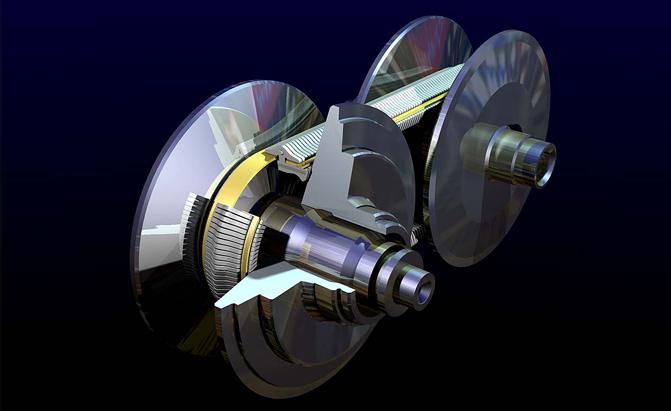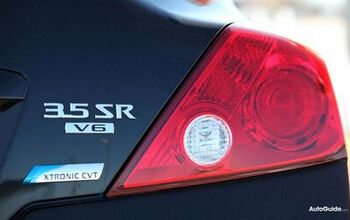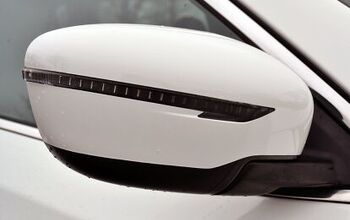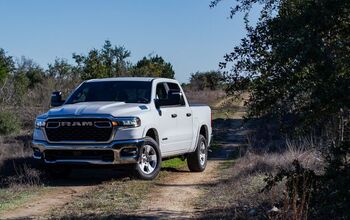CVT Transmission Pros and Cons

Continuously Variable Transmission. Those three words are guaranteed to strike dread in the heart of any gearhead who has ever enjoyed a slick-shifting manual transmission or a crisp-shifting dual-clutch automatic. CVTs eschew traditional gears and instead use a brace of pulleys connected by a strong metal belt.
Rather than deploy a traditional planetary gearset in which a transmission can call upon one of a certain number of gear ratios, a CVT operates without any physical gears at all. Instead, it deploys a belt and pulley system that varies in shape depending on power demands. Technically, it has an infinite number of ratios.
Early efforts of the CVT were plagued with customer complaints of a “rubber band” or “slipping” feel, as the transmission was programmed to head for the engine’s rpm power peak and stay there under hard acceleration. More recently, CVTs have added in a faux-shift feel to appease customers who do not care for their car to sound like a herd of depressed beef cattle. CVTs are much better than they used to be and they’re not as bad as you might have heard, but they’re still not perfect. Here’s a quick overview of CVT transmission pros and cons.
CVT Transmission Pros and Cons
Pros
Optimal Power Delivery: With this type of transmission, your car is always in the right gear. Unlike an automatic or even a manual unit, the CVT is programmed to keep the engine’s speed square in its optimal power band, rather than running the tachometer needle from idle to redline when a driver needs acceleration. This arguably provides better performance in some situations, especially when passing another vehicle.
Economy Advantages: A CVT is often more efficient than its traditional counterpart, at least in terms of fuel economy, by dint of always placing a vehicle’s engine speed at the right place at the right time. Cruising at a steady freeway speed, drivers of CVT-equipped cars will find their tachometers reading a very low number, which is great for efficiency.
Simpler Construction: The total number of mechanical parts in a CVT are lower compared to a typical planetary-gearset transmission. Devoid of the usual phalanx of gears and cogs, a CVT box uses a brace of adjustable conical pulleys connected by a steel chain or belt. Depending on the vehicle’s speed, the sides of each pulley move toward or away from each other, varying the drive ratio, passes the chain into a groove formed between the pulleys. This mechanical simplicity means things tend to go wrong less often.
ALSO SEE: Are CVT Transmissions Reliable?
Lighter Weight: Thanks to their innards, CVTs are often lighter and more compact than a conventional automatic transmission. Dropping weight from a car’s powertrain has several advantages, not the least of which is a bump in fuel economy.
Smooth Shifter: Anyone who’s awkwardly poked their left foot at a clutch pedal knows the embarrassment of roughly grabbing the next gear. Your passenger snaps about like a bobblehead, wondering why you’re driving like a pro-demolition derby driver. CVTs, thanks to not having any gears at all, move seamlessly from idle to peak power.
Cons
Sounds Like It’s Busted: CVTs have a natural disadvantage because some of them are programmed in such a way that makes consumers think they are broken or working improperly. A traditionally programmed CVT absent of any stepped gear feeling may cause a driver to unfairly misjudge its normal operating performance as a sign of unreliability.
Noisy Operation: Many drivers have complained about the CVT propensity to “hang” at a high rpm, causing the engine to rev wildly under acceleration. This is an inherent trait of all CVTs, even those programmed with simulated stepped gears. Extra noise is generally unwelcome in any car unless it is the rumble of a powerful engine.
ALSO SEE: Should You Buy a Car with a CVT Transmission?
Opposite of Sporty: It’s tough to argue against the fact that CVTs are simply no fun at all. Sure, they’re useful and efficient, but so is my toaster on the kitchen counter, a unit which definitely does not inspire one shred of emotion, except for the occasions when it inexplicably turns my morning toast into fresh cinders. No ballads will be sung about continuously variable transmissions, either.
Not Bulletproof: You’ll notice the majority of today’s vehicles that have a CVT slung underneath them are milquetoast econoboxes or compact crossovers that lean more towards practicality than sportiness. This is not a coincidence. Most CVTs are not yet able to handle high-torque applications without shattering themselves into a thousand oily bottlecaps.
Expensive Maintenance: Upkeep and running costs of a CVT tend to be quite low but actual repairs can be more expensive thanks to parts that are generally more expensive to replace. Finding a competent transmission specialist who knows their way around a CVT with the same confidence as a traditional manual or automatic may also be a challenge.

Living in rural Canada, Matthew has immersed himself in car culture for over 30 years and relishes the thought of a good road trip. A certified gearhead, he enjoys sharing his excitement about cars and is very pleased to contribute at AutoGuide. Matthew is a member of Automotive Journalists Association of Canada (AJAC).
More by Matthew Guy


































Comments
Join the conversation
It depends. If its new car, flushing it wouldnt be a bad idea because it can keep the system clean, but if its an older car thats never had it flushed before and your fluid is nasty, its better not to because I can spring up bunch of leaks
I read somewhere that you shouldn't flush your toilet.
What should I do?